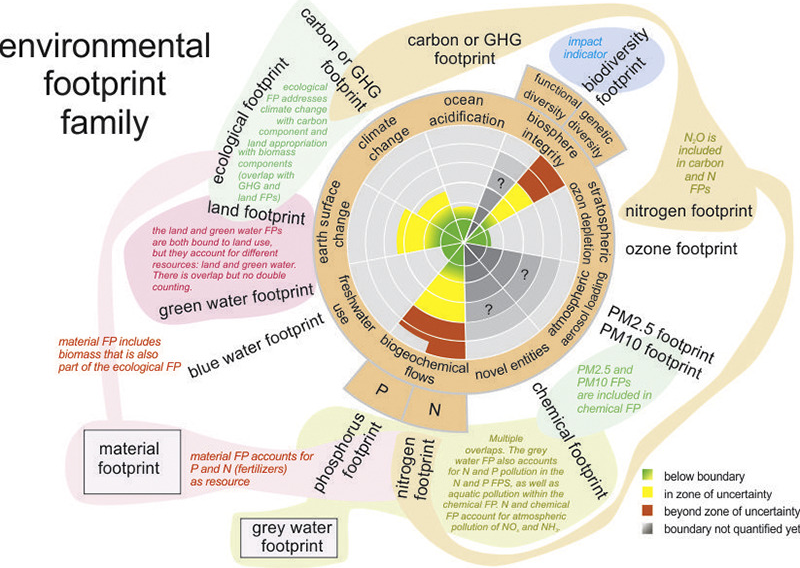
In a new JRC-led article, leading global scientists bring existing environmental footprints into a single environmental footprint family that can be used to more accurately assess, and identify ways to ensure, local and planetary environmental sustainability.
They show how the combined environmental footprints relate to the nine planetary boundaries (the safe limits for the Earth system’s most critical processes), the Sustainable Development Goals (SDGs) and the Water-Energy-Food-Ecosystem (WEFE) nexus.
This new environmental footprint family provides a comprehensive and flexible framework for measuring the pressures of individual and community human activities on a range of aspects of the environment, and helps identify potential measures (diet shift, food waste reduction, changing the composition of the energy mix) to reduce them.
The paper is based on a recent JRC-organised workshop that brought together 23 leading experts from 17 different institutions around the world to systematise the many existing environmental footprint indicators within a coherent framework.
Environmental footprints
Environmental footprints quantify resource use and/or emissions. They are indicators of pressure on the Earth system. Many have emerged over the past two decades. Well-known examples include the carbon, water and ecological footprints, but the environmental footprint family also includes the land, nitrogen, phosphorous, material, biodiversity, chemical, PM and ozone footprints.
Many of these overlap, and some offset each other. For example, N2O emissions are considered in both the carbon and the nitrogen footprints, and replacing fossil by bio-energy might reduce a carbon footprint at the expense of land and water footprints.

By integrating these different footprints into a single coherent and flexible framework, the Environmental Footprint Family facilitates a more comprehensive understanding of environmental issues, policy formulation and assessment of trade-offs between different environmental concerns.
Using the Environmental Footprint Family to measure sustainability
Back in 2009, a group of Earth system and environmental scientists defined nine planetary boundaries that mark the safe operating zone for the Earth system. These include climate change, biodiversity integrity, biogeochemical flows, ocean acidification, earth surface change, freshwater, ozone depletion, atmospheric aerosols and chemical pollution.
Environmental footprint indicators can be used to identify the extent to which different processes and societies contribute to reaching or exceeding planetary boundaries, from local to global levels.
The carbon, water, ecological, land, nitrogen, phosphorus, PM2.5 and PM10, ozone, and biodiversity footprints provide information on eight of the nine planetary boundaries. Chemical pollution could be proposed as another planetary boundary, for which the chemical footprint can be a relevant indicator.
The 17 Sustainable Development Goals (SDGs) were set by the United Nations General Assembly in 2015 as a blueprint to achieve a better and more sustainable future for all by 2030.
Of the footprint family, only the material footprint is an official SDG indicator, but certain provisioning ecosystem services relate directly or overlap with the material, ecological and blue water footprints.
The terminology “environmental footprint” is also used in the Life Cycle Assessment (LCA)-based product and organisation environmental footprints (PEF and OEF) of the European Commission, which can be regarded as complementary indicators to the footprint family as they measure the environmental impacts of goods and services (PEF) and organisations (OEF), respectively.
Next steps
The authors call for collaboration between Earth system scientists and footprint accountants to shed light on the connections among and between environmental footprint indicators and the planetary boundaries, and to understand how a system might respond to the pressures measured by footprint indicators.
Further information
- Environmental footprint family to address local to planetary sustainability and deliver on the SDGs
- Planetary Boundaries and the Sustainable Development Goals: Conference of Prof. Rockstrom with the European Commission, 20 June 2018
Related Content
Environmental footprint family to address local to planetary sustainability and deliver on the SDGs
Planetary Boundaries and the Sustainable Development Goals: Conference of Prof. Rockstrom with the European Commission, 20 June 2018
Details
- Publication date
- 6 August 2019
